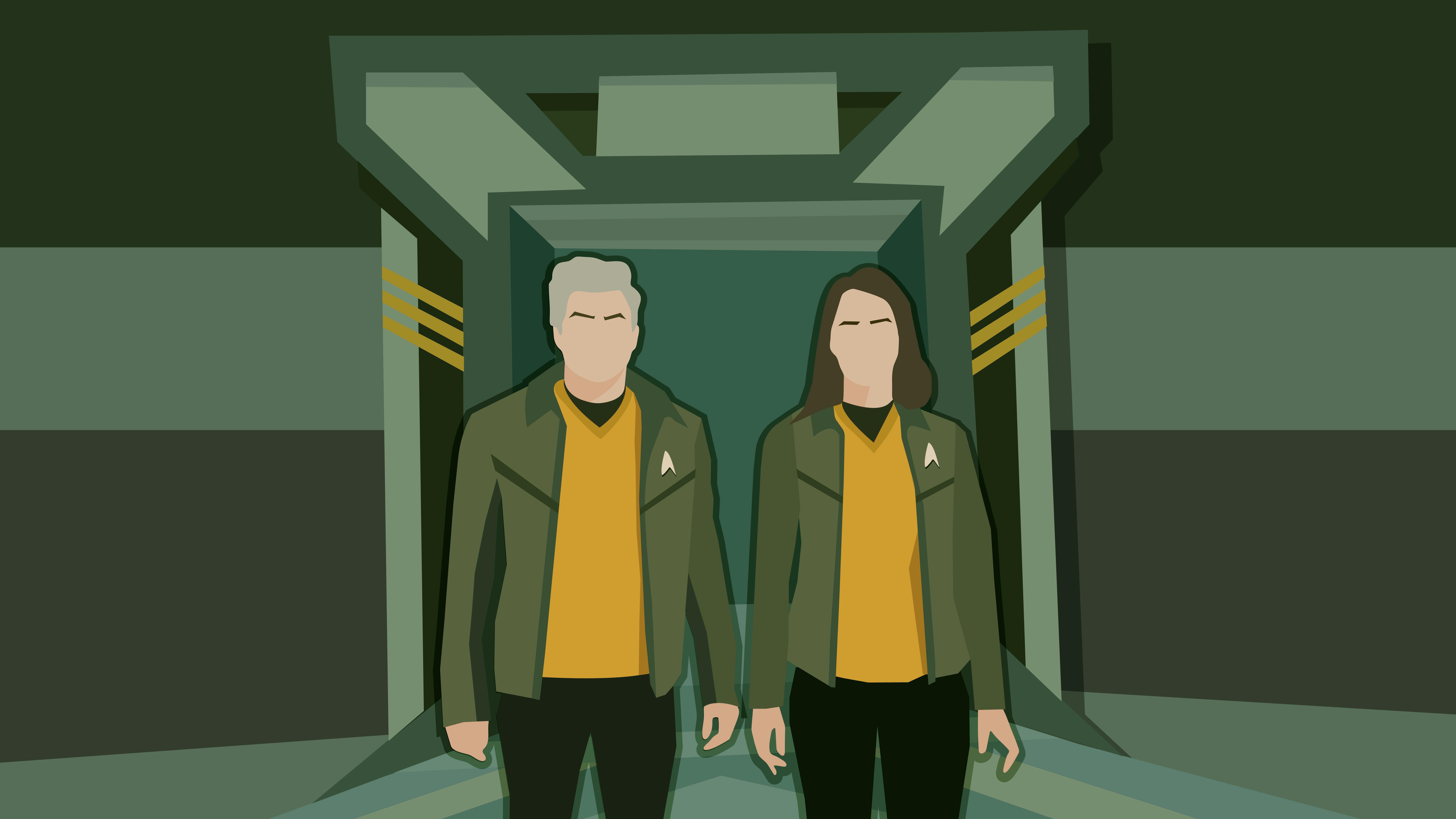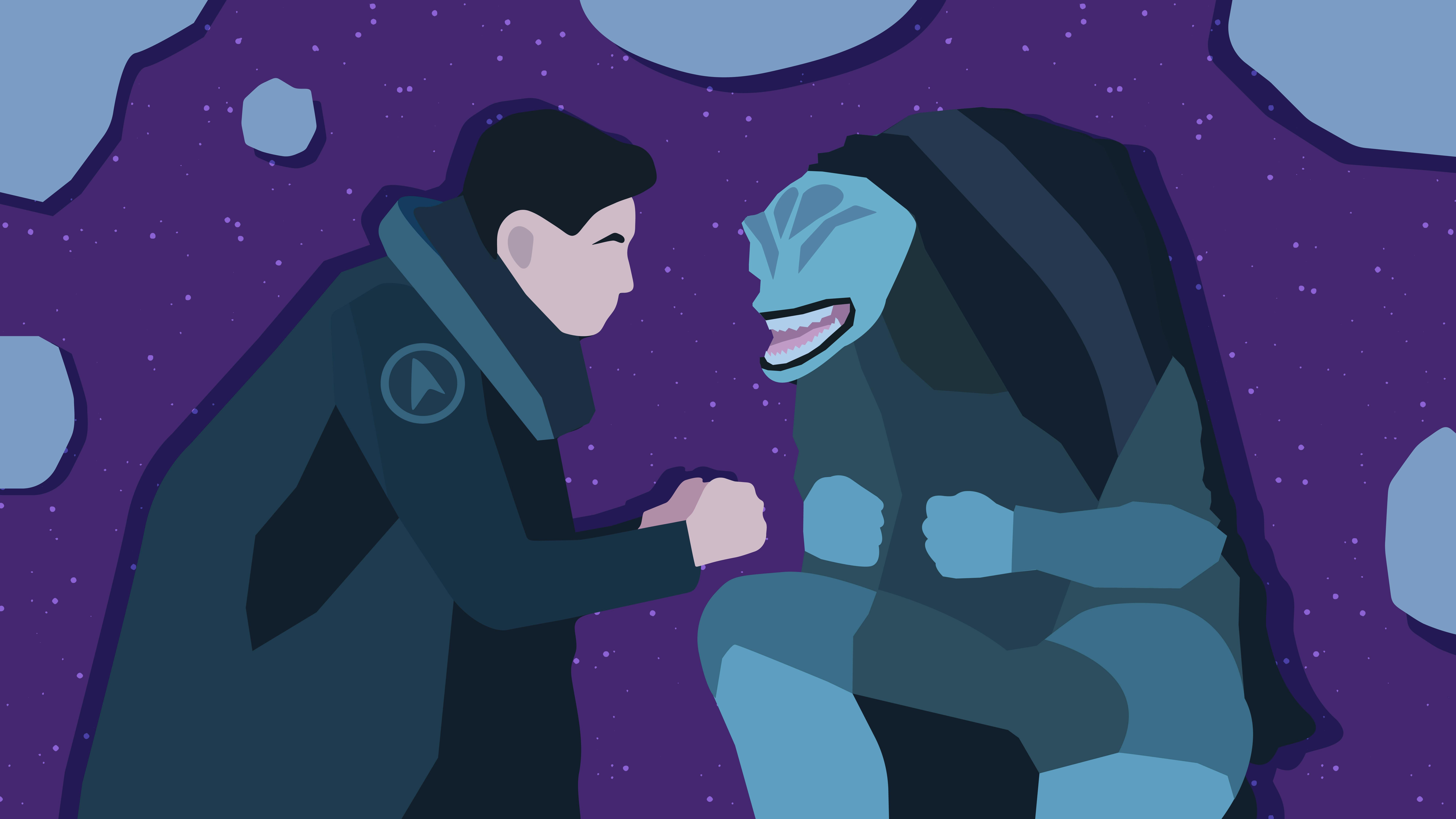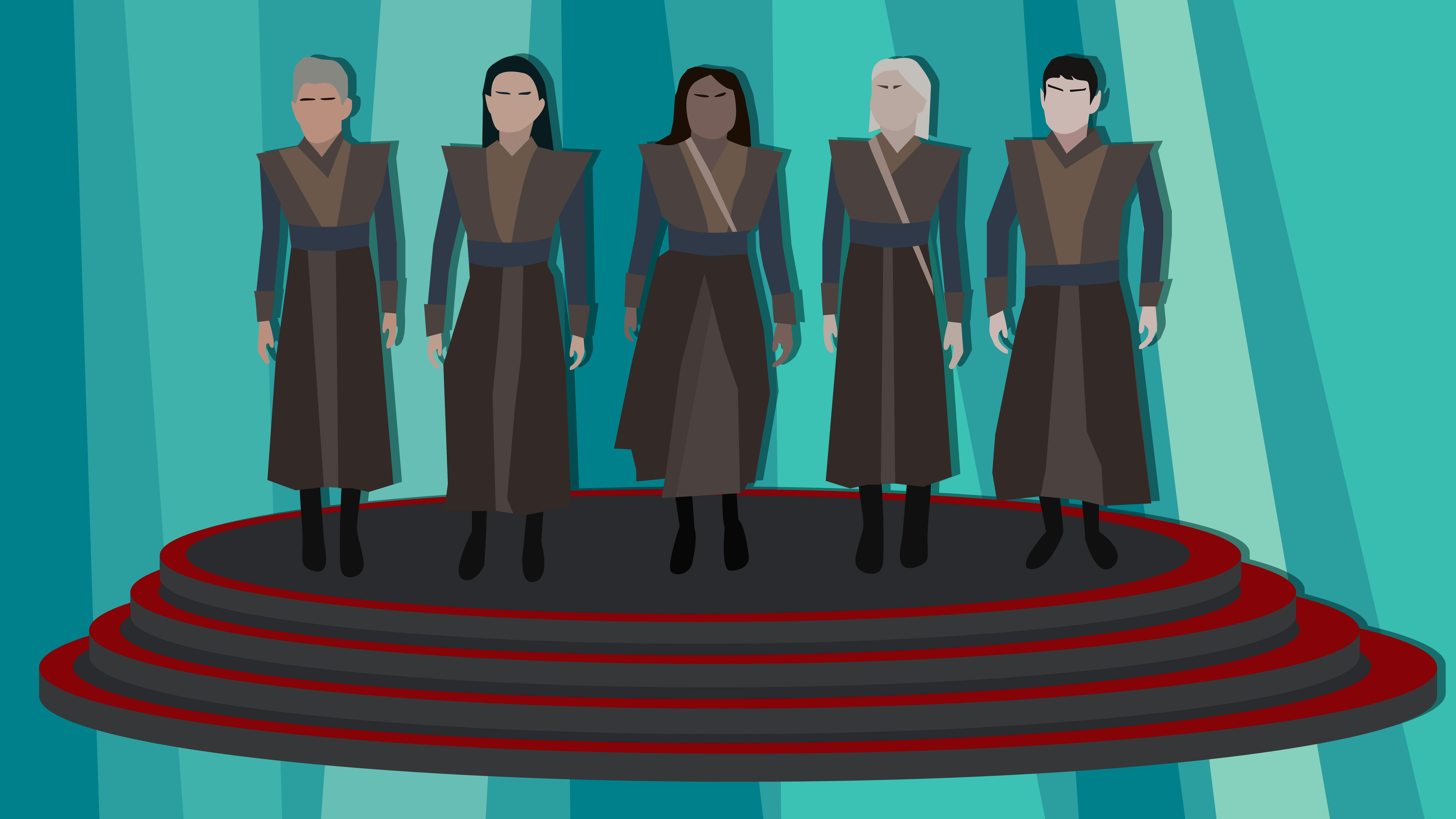Published Oct 30, 2023
'Persistence of Vision' is Essential Halloween Viewing
Not only is this Voyager episode terrifying, its lessons reverberate perfectly still today.
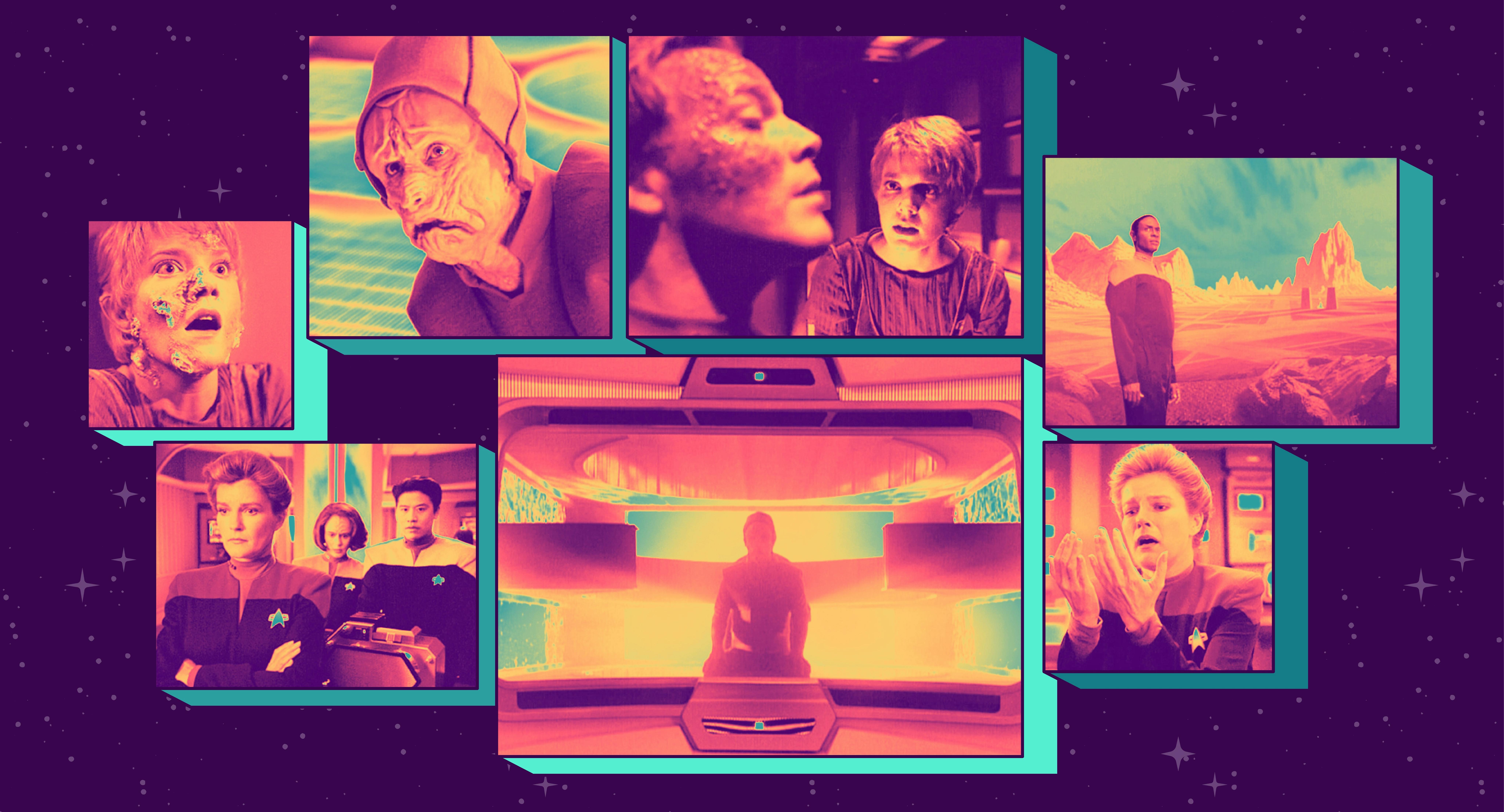
StarTrek.com
When I was a child, three things near scared me to death — aneurysms, the dark, and an episode of .
It’s much easier to quantify the first two. My family cared for a small, yappy dog who unexpectedly died from brain rupture; the woods behind my house were filled with coyotes, and when I gazed into the night through my bedroom window, I could hear (or imagine) their howls all too frequently. Both were terrors of my relative present.
Star Trek: Voyager, though? Not so much. If anything, the UPN flagship show was a weekly respite from my childhood woes of bullying and classroom-spurned anxiety. The journeys of Captain Janeway and crew offered comfort in the fantastical; my over-active mind did not. U.S.S. Voyager was my break from reality and, more importantly, myself.
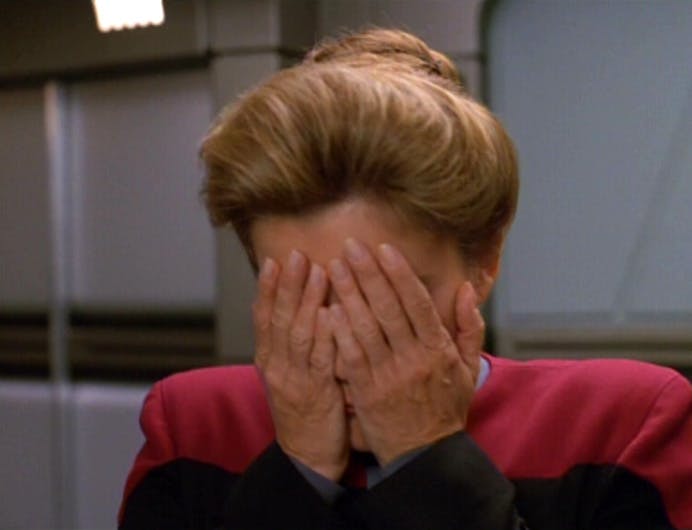
"Persistence of Vision"
StarTrek.com
“,” the eighth episode of Voyager’s (stellar) second season, offered no such luxury. When it first aired on Devil’s Night in 1995, I had nightmares for a week. It wasn’t just the visions of Kes’ burning boils which haunted me; an insidious thread I couldn’t name tied the episode together. And, at age 10, I felt the tiniest desire to tug it, knowing psychic hell awaited. That’s an insane prospect to realize in third grade, and it stuck. My parents pulled Voyager from our “safe to watch” list and my scary dreams subsided. I never revisited the episode.
Until now.

"Persistence of Vision"
StarTrek.com
It is Halloween 2019; I am 33 years old. Like many adults, the breadth of what scares me has changed but the core content hasn’t — and I have come here to declare that 10-year-old me got it right. “Persistence of Vision,” despite a wealth of obvious flaws, is, in fact, essential Spooktober viewing for this and every year.
Its sci-fi visions of manipulation and gaslighting speak to our modern age, in which one’s identity is all too quickly rendered traits and vulnerabilities to be preyed upon — more often than not online. That’s right; the Voyager crew gets trolled in “Persistence,” to a degree that almost turns deadly. And if the episode didn’t pull some of its punches to meet network censorship standards, it’d be all-time nightmare fuel.
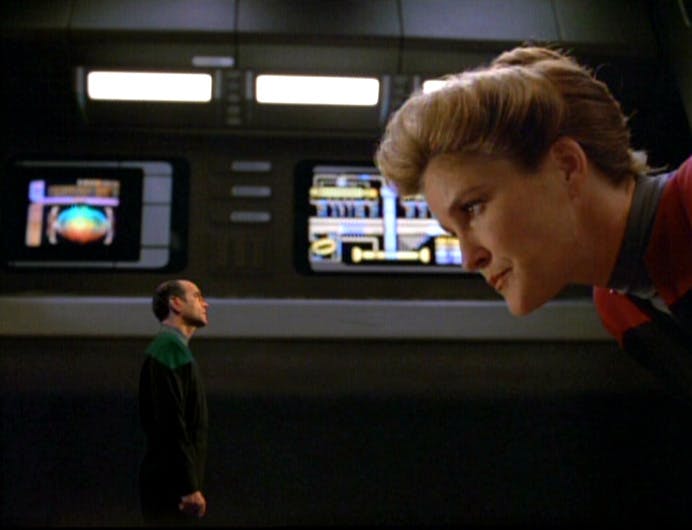
"Persistence of Vision"
StarTrek.com
“Persistence” opens on Janeway putting off basic alien engagement prep with the Botha species and snapping at Torres and Kim. The reason? She’s overworked. It’s been two months since she took shore leave, longer still since she allowed herself recreation of any sort. The Doctor (in miniature thanks to Torres and Kim, natch) orders her to report to the Holodeck and unwind through the worst holonovella ever, which he can do because of Starfleet Regulations. It’s a playful opening and one which sneakily buries the episode’s lede — Janeway underestimating the Bothans.
Why she does is understandable; they’re barely a blip on the universal radar. What info Neelix has managed to gather about them comes from shadowy nomads, and is rife with ominous vagaries. They’re not aggressors, but ships go missing in their territory. They’re fiercely protective of their borders, but “there’s some belief that they don’t even have a claim to the space,” Neelix stammers, “which would make them more than pernicious and odious vandals.” The ship is then hailed by a lone Bothan and, disconcertingly, this image follows —

"Persistence of Vision"
StarTrek.com
Remind you of anything?

One of Twitter's default user images
This face — or lack thereof — has trolled me oh so many times. Facebook’s version of this ghostly image plagued my page with threatening accusations four years ago, insinuating a friend’s fictitious involvement in illegal activity. Later, when I spoke out against police brutality, a litany of jeering trolls descended. And when I announced my involvement in A24’s Skin, a biopic of reformed white supremacist Bryon Widner, members of hate groups flocked to my Instagram stories, watching through obfuscated, threatening profiles. Like the Bothans, they present ideology before identity; their shadows imply violence. “Why wouldn’t he let us see his face?” Janeway muses.
“I suspect it was a calculated move,” Tuvok answers, “to intimidate us.”
Yet that’s only one tactic of many in the Bothans’ arsenal. Over the course of 40 minutes, they use their telepathic powers to seduce Torres into catatonia. They prey on Paris’ wounded ego. And they claw at Janeway’s sanity, particularly in a captain’s quarters attack which would be terrifying if better executed. The infiltration of Janeway’s living space is laced in pure, and effective, vintage horror tropes, from the extended bout of silence that scores its first, frightening beats to the disembodied voice of her husband. I had forgotten it climaxes with a knife-wielding, 19th Century hologram; I never will again.
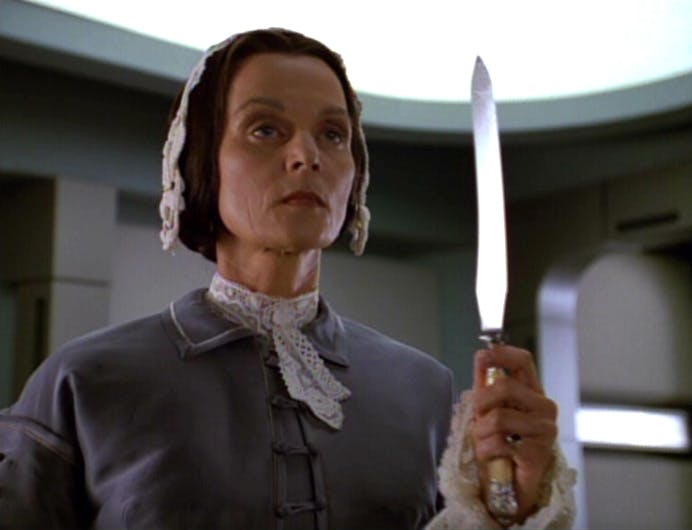
"Persistence of Vision"
StarTrek.com
This is what makes the Bothans perfect villains for our internet age; there’s no bottom to their torture. It is an endless screed of tactics, one both devil-may-care and casually cruel. There is nothing and no one they won’t prey on; their endgame is malice. It’s almost worse, somehow, that the Bothans aren’t murderers — if only because they make one’s existence a Möbius strip of suffering. I can’t think of a more 2019 fate than hitting refresh on terror from sun up to sun down, until sleep doesn’t come — of being psychologically persecuted straight into paralysis. It sort of sounds like Twitter.
That might sound glib, but I promise you it isn’t. The episode’s last 10 minutes mirror a common online exchange I’ve seen through countless friends’ DMs. Kes, the last crewmember standing against the Bothans, makes her way to the engine room and snaps the crew to waking. Before she can, a Bothan projection arrives, in the form of Neelix. At first, he coos at her affectionately (“Sweetie, I’m so glad you’re safe!”). He offers her safety and salvation in the form of his shuttle. But when Kes sees through his hallucinatory charade, he becomes deeply aggressive (“You’re becoming annoying”); he threatens her with violence. And when Kes remains non-compliant, “Neelix” projects burning boils on her skin.

"Persistence of Vision"
StarTrek.com
It’s a moment that mirrors the tone of The X-Files (and even Event Horizon, to which this episode’s a precursor), but its roots are toxic masculinity. It’s no accident that writer Jeri Taylor chooses a facsimile of Voyager’s sweetest character to anchor it. Neelix becomes the proverbial “nice guy,” a charmer whose kindness is boundless until he is denied. Then the gloves come off. And like so many awful men, the Bothans feel entitled to Kes, her ship, and the space in which it travels. They may treat it as they please; it belongs to them already.
It’s this sequence that will haunt me most as an adult, and not just because it reminds me of harassments past and present, of every troll I’ve ever encountered. No, the conclusion of “Persistence of Vision” haunts me because once the smoke has cleared, the Bothan appears non-threatening. After Kes cripples him by projecting his own malevolence into his psyche (which, what a metaphor), she and Torres note his form. “He looks so harmless,” Kes whispers, “it’s hard to believe he almost destroyed us.”
But that’s the modern boogeyman — an apotheosis of hate who hides behind an avatar, a creature waiting to pounce on our beliefs and identities and sink poisoned fangs into. When I was young, I knew the coyotes were in my backyard because I could hear them. Now, the wolves are simply out there. Waiting.
And they’re already in my mind.

